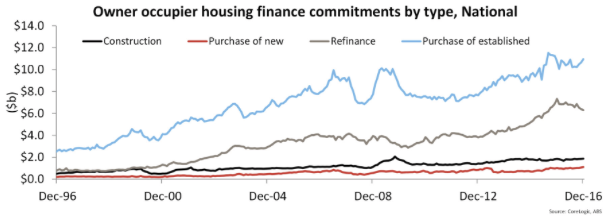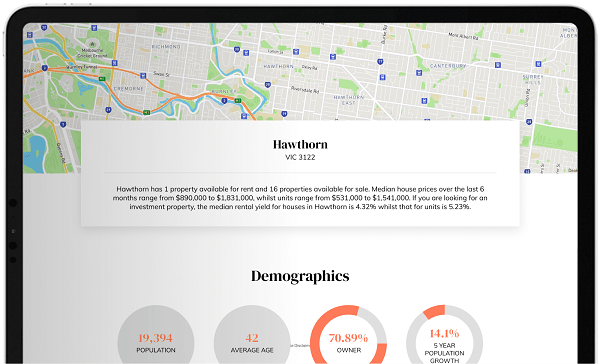Mortgage demand for established housing stock continues to climb
Housing finance data for December 2016 was released earlier today by the Australian Bureau of Statistics. Demand for mortgage finance continues to increase over the month reflective of the ongoing growth in home values currently being experienced.

The above chart does not use seasonally adjusted figures. It does show the different segments of the market borrowing at the moment with the market being driven by owner occupier non first home buyers and the investment segment. According to this data, in December 2016, 7.1% of housing finance commitments were to owner occupier first home buyers (an historic low), 35.5% was to owner occupier non first home buyers, 17.9% was for refinances by owner occupiers and 39.5% was to investors.
In December 2016, owner occupiers committed to $20.2 billion in housing finance which was up from $20.0 billion in November 2016. Although overall demand from owner occupiers is now climbing, it was -3.4% lower in December 2016 than in December 2015. The $20.2 billion in owner occupier housing finance commitments was split between: $1.9 billion for construction of dwellings, $1.1 billion for purchase of new dwellings, $6.3 billion for refinancing of established dwellings and $10.9 billion for purchase of established dwellings. Owner occupier mortgage demand is largely coming from those purchasing established dwellings while refinancing in is a clear downwards trend having fallen by -14.1% from its peak in December 2015.
There were $13.2 billion worth of housing finance commitments to investors in December 2016. This was slightly lower than the $13.3 billion in November 2016 but up 19.9% on the $11.0 billion in December 2015. The value of investor housing finance commitment is now just -9.5% lower than its historic monthly peak of $14.6 billion in April 2015. This clearly highlights that the constraints to investors implemented throughout 2015 restricted access to mortgage finance to investors but did little to dampen investor demand which has since rebounded strongly. Over the month, there was $0.9 billion in commitments for construction of dwellings and $12.3 billion for established housing. While demand for mortgages for construction of dwellings eased in December 2016, demand for established investment properties has continued to climb.
In December 2016, there was $3.8 billion worth of commitments for new housing compared to $23.3 billion in commitments for established housing. Over the month, commitments for new housing stock fell while commitments for established housing continued to climb. Keep in mind there are significantly more established homes available to be purchased at any given times than there are new homes however, the gap between commitments for new and established stock continues to climb. Another contributing factor to the growing differential is probably the fact that given a similar location and product offering, new housing often has a price premium to established stock. With housing affordability stretched, buyers may be more inclined to choose more affordable established housing stock.
Housing finance commitments are continuing to trend higher, in December 2016 the increase was driven by owner occupiers rather than investors. Looking more granularly at the data it indicates that commitments for established housing stock have increased while new housing stock waned over the month. With interest rates low and population growth remaining strong, it is anticipated that as we enter 2017, at least initially, demand for housing finance is likely to continue to rise.
Source: Cameron Kusher


